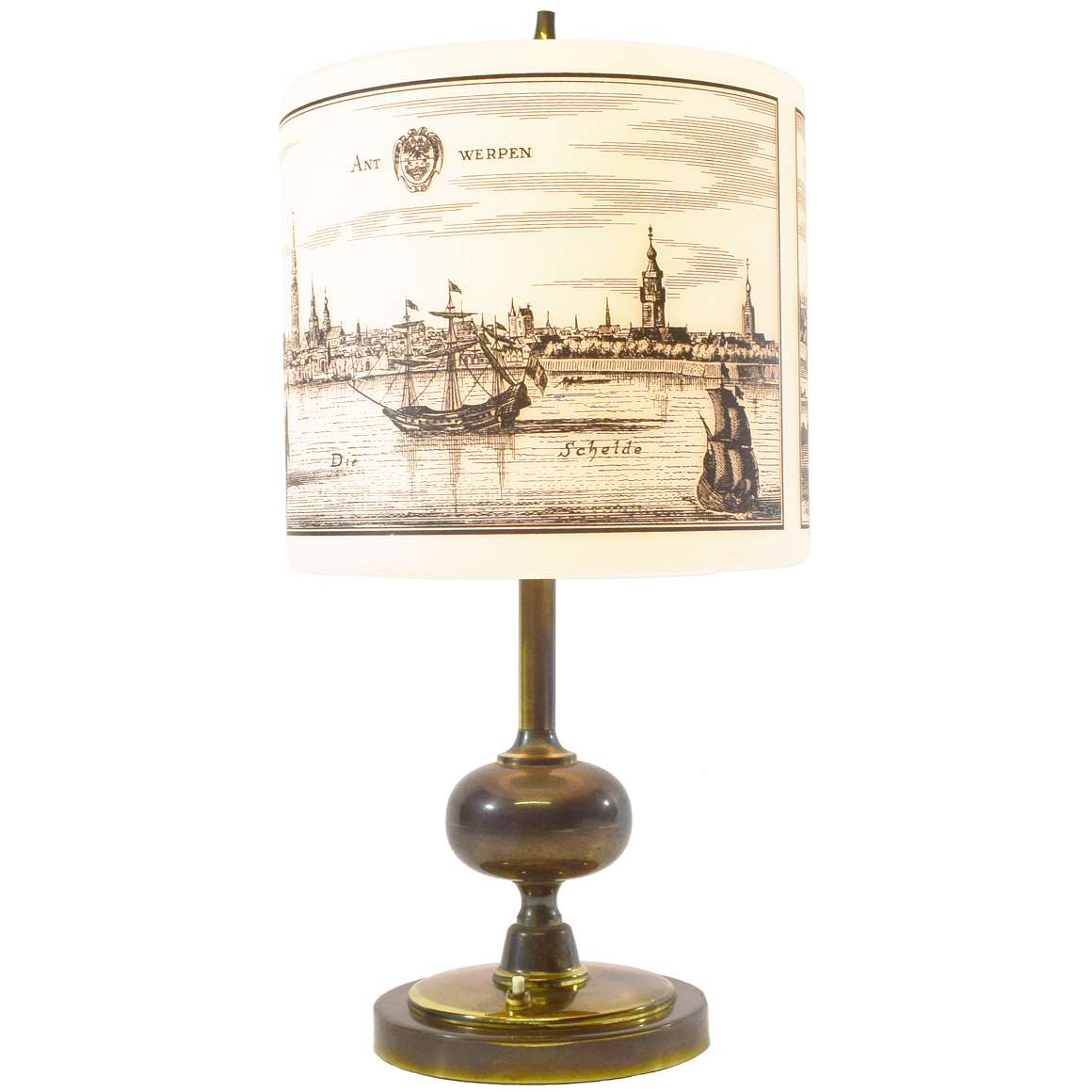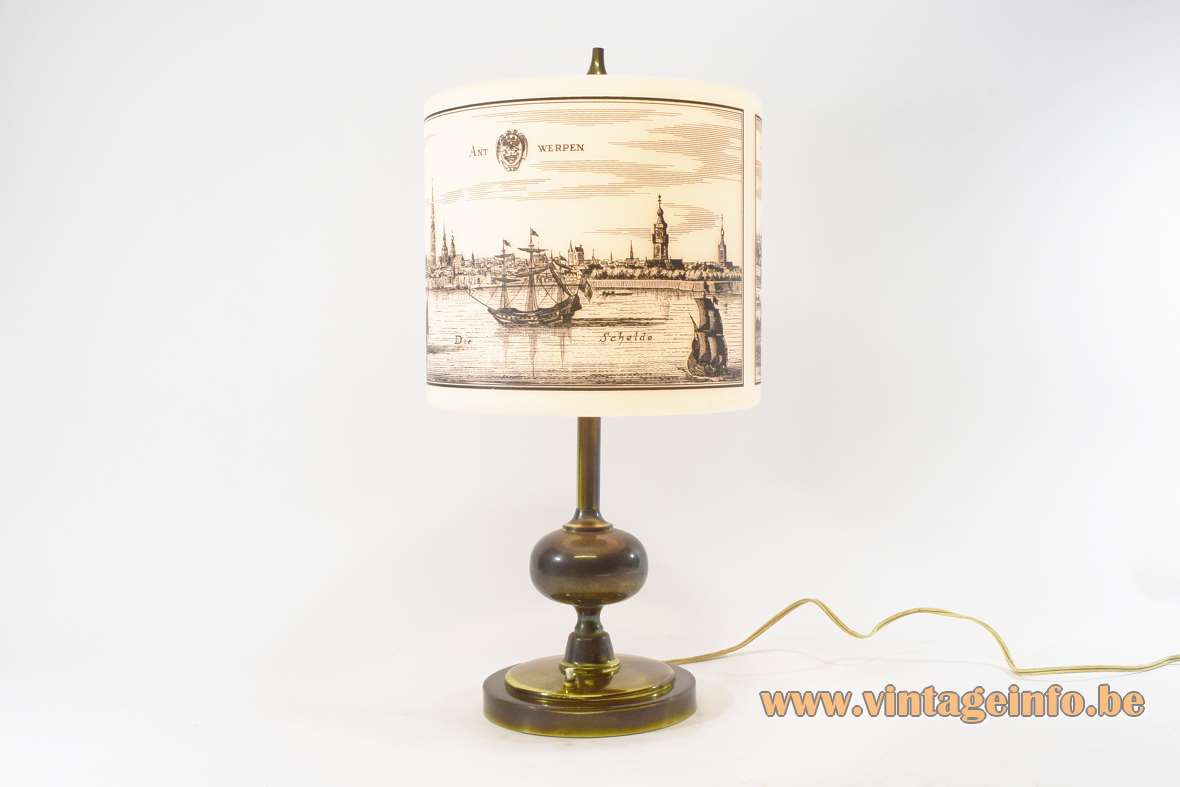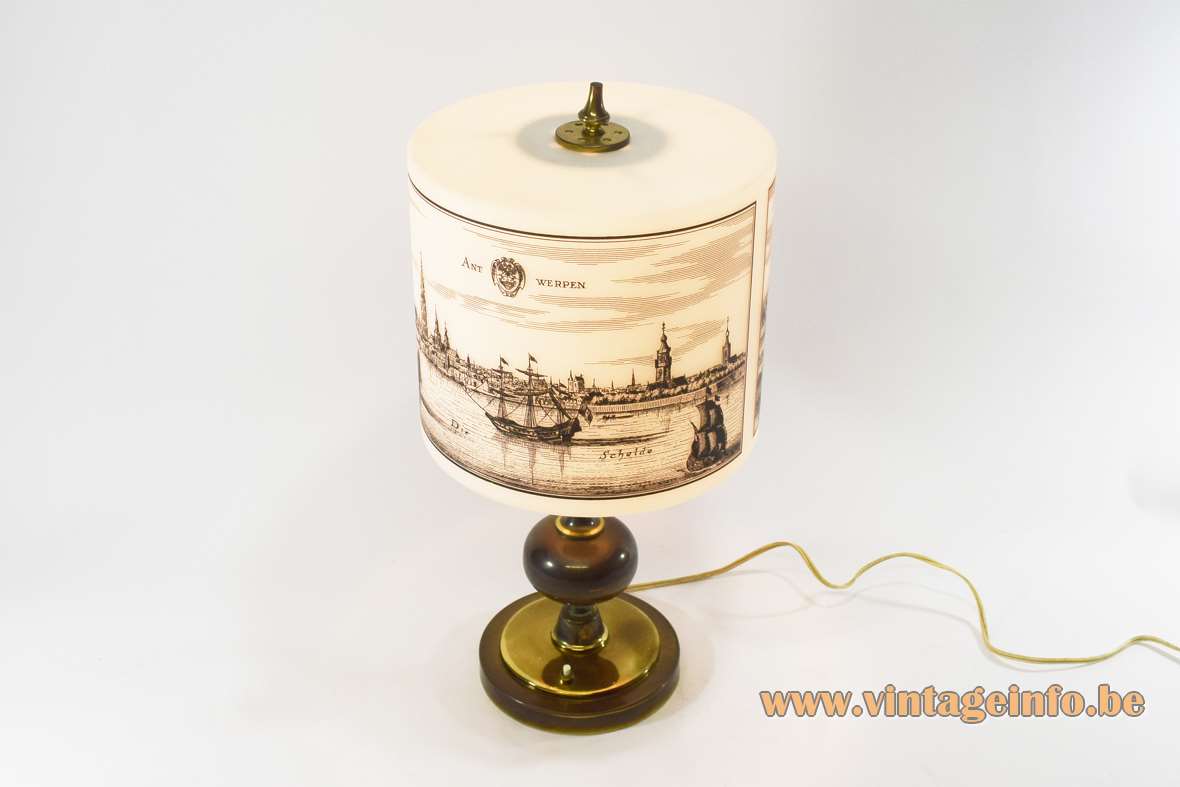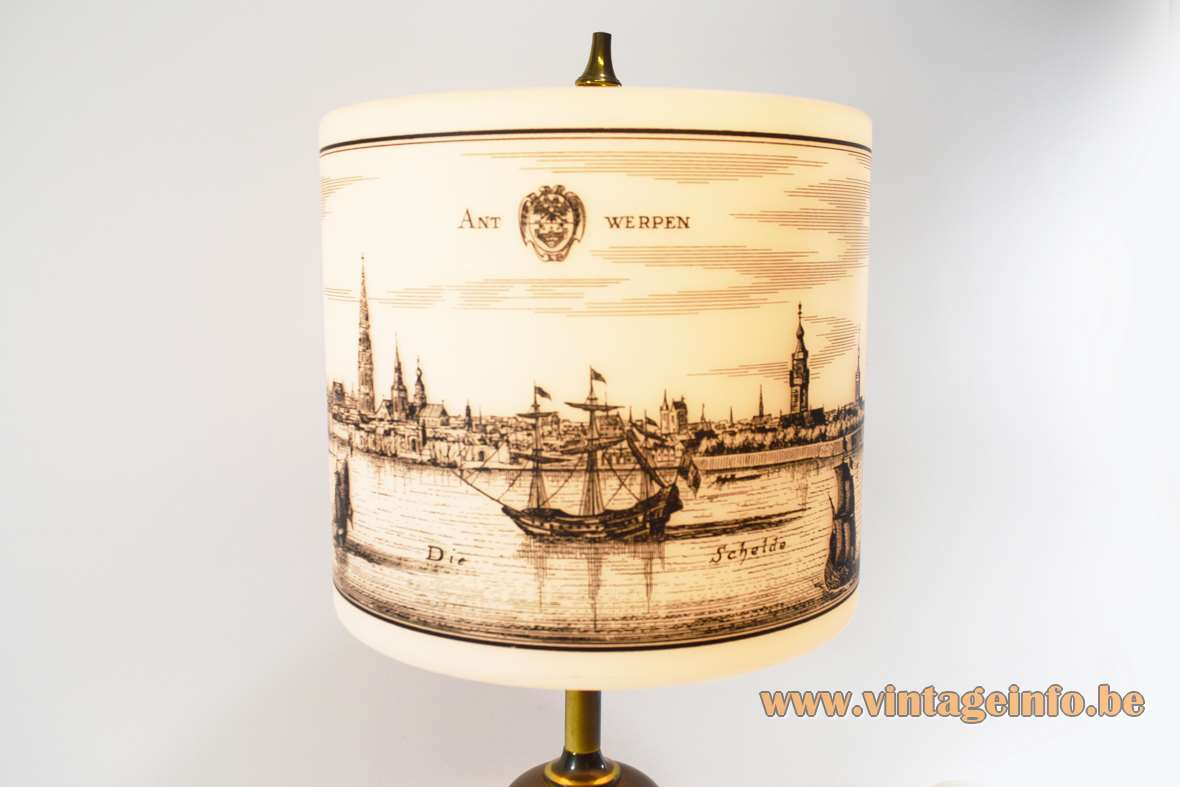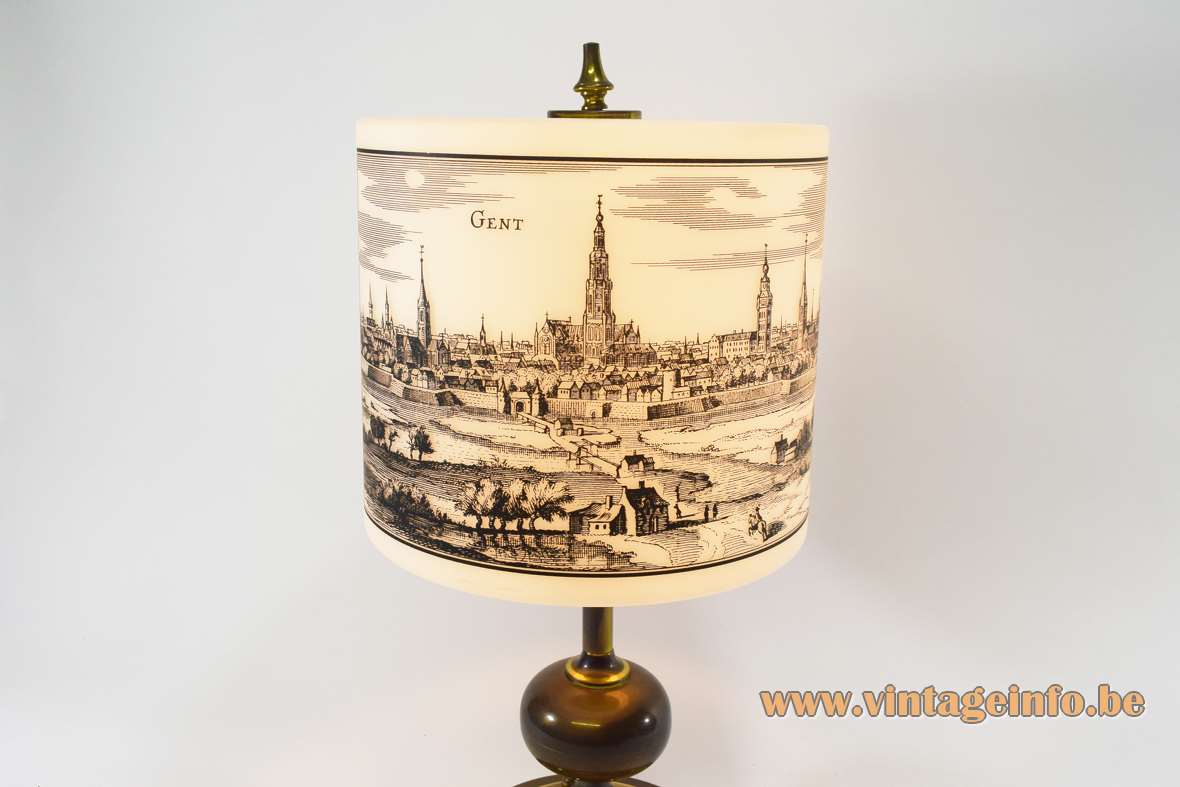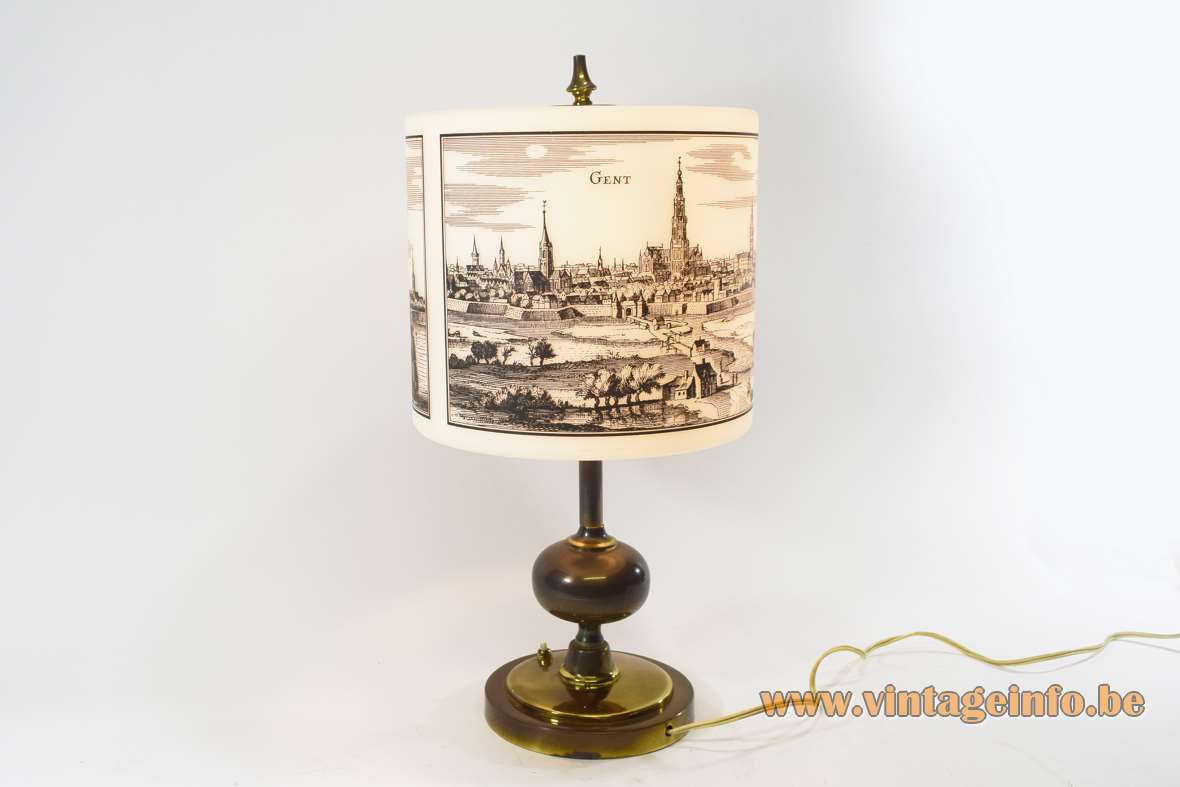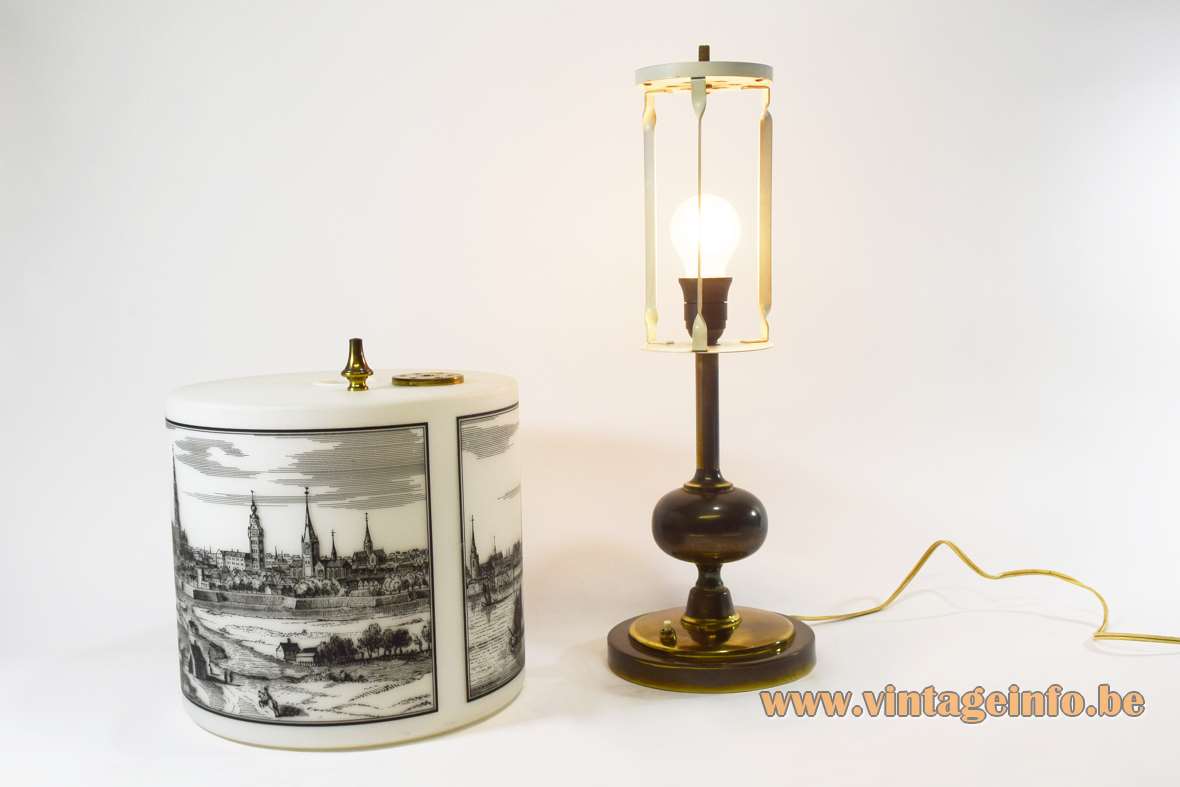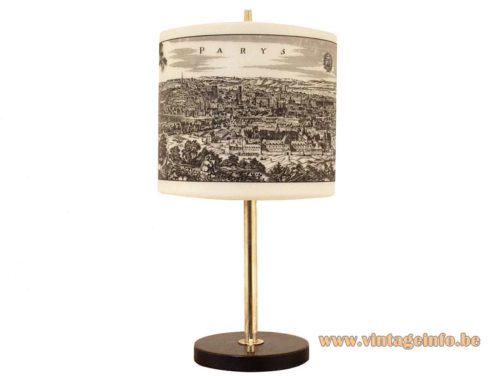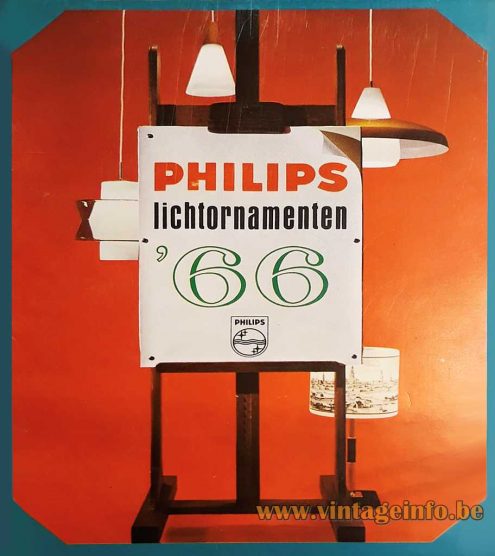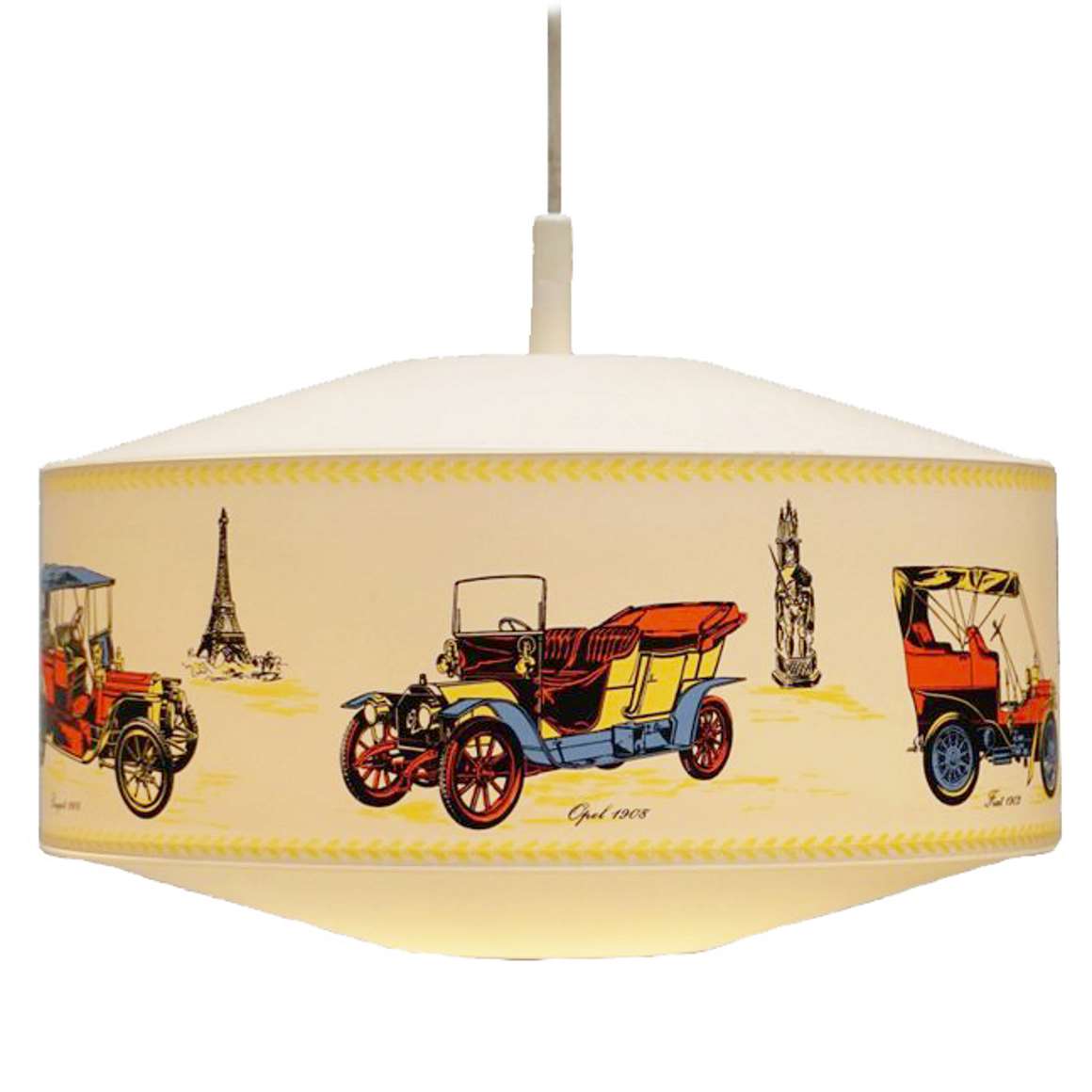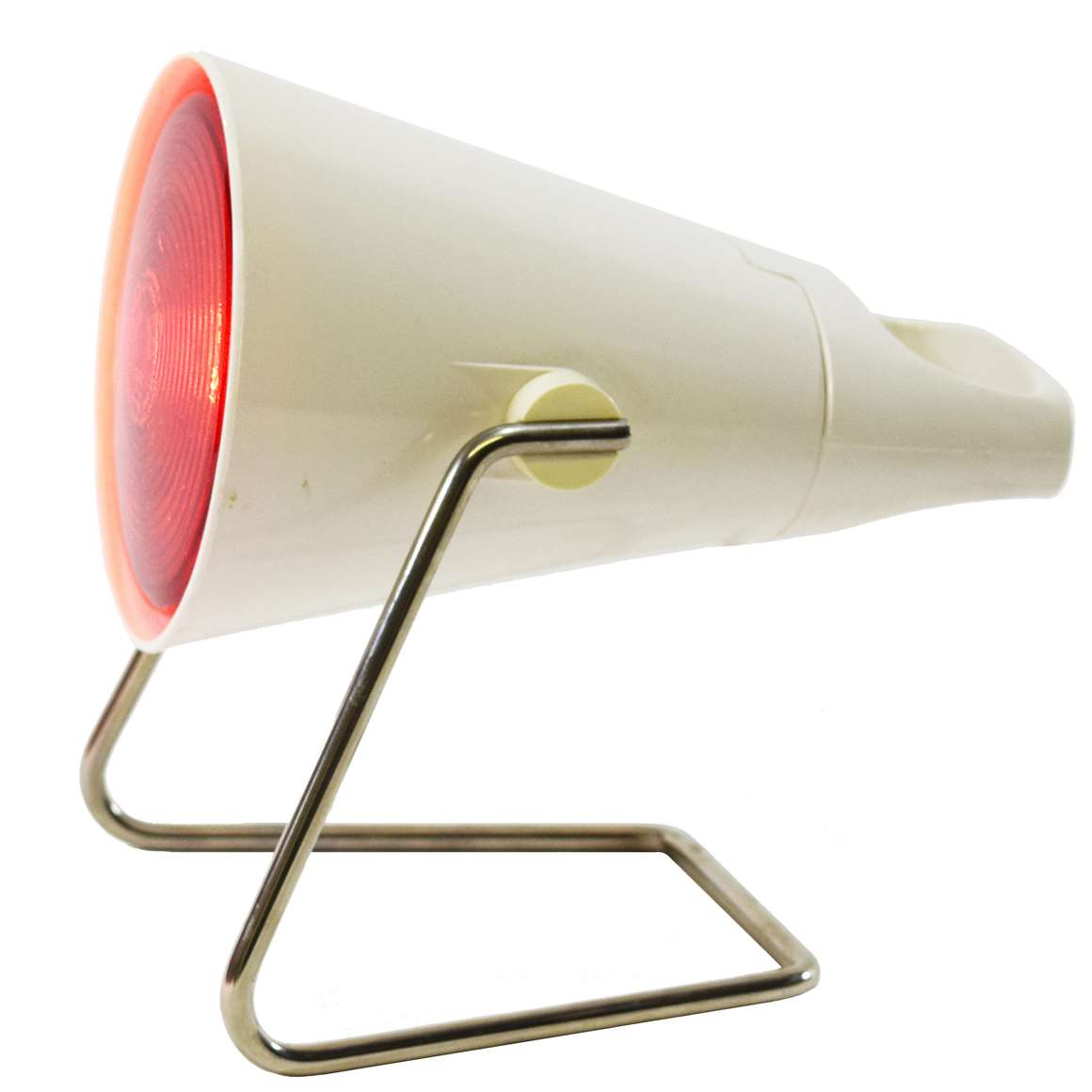Antwerp – Ghent, Belgium 1950s Table Lamp – Newer Version
Links (external links open in a new window)
List of most populous municipalities in Belgium – Wikipedia
The complete history of the company on the Philips website
The Evoluon building – Wikipedia
Website of the Philips Museum in Eindhoven
Vintageinfo
Antwerp – Ghent, Belgium 1950s Table Lamp
Materials: Round brass base with an oval globe in the middle. Some white painted metal parts. Round tubular opal glass lampshade with a medieval city print. Bakelite E27 socket.
Height: 54 cm / 21.25”
Width: ∅ 28 cm / 11.02”
Base: ∅ 18 cm / 7.08”
Electricity: 1 bulb E27, 1 x 60 watt maximum, 110/220 volt.
Any type of light bulb can be used, not a specific one preferred.
Period: 1950s, 1960s, 1970s.
Designer: To be appraised.
Manufacturer: Philips, Eindhoven, The Netherlands.
Other versions: This Antwerp – Ghent, Belgium 1950s table lamp, was made with different prints — sometimes showing other cities, sometimes with no print at all — but very often with these medieval-style drawings. The text on this particular lamp reads “Antwerpen – Die Schelde” (“Antwerp – the Scheldt”) and “Gent” on the other side.
These lamps also exist with advertising for beers, pubs and similar businesses. On this page there is also a lamp with a Paris decoration, written in old Dutch spelling: “Parys” instead of “Parijs.” That one is a later version from the 1970s and has a different rod. Over the years, different lamp bases were used with the same shades.
These table lamps were commonly seen in Belgian bars, pubs, taverns and restaurants throughout the 1950s, 1960s, 1970s and even the 1980s. Antwerp and Ghent are the two most populated cities in Flanders, Belgium.
It is very likely that these lamps were produced in Leuven or Turnhout, two Belgian cities where Philips manufactured lighting. A newer version of this table lamp also appears in a Philips catalogue from 1966.
Koninklijke Philips N.V.
Inspired by the fast-growing electricity industry and by the promising results of Gerard Philips’ own experiments with reliable carbon filaments, his father, the Jewish banker Frederik Philips from Zaltbommel, financed the purchase of a small factory in Eindhoven, the Netherlands, on 15 May 1891.
The first years were difficult and the company was close to bankruptcy, but in 1895 Gerard’s younger brother Anton Philips joined the firm. With Anton’s commercial drive the family business expanded very quickly and the Philips brothers turned the lamp factory into the basis of what would become a major international electronics company.
To secure the supply of lamp parts, Philips very early started to make things in-house: its own machines, its own glass (from 1916) and even its own gas separation to fill lamps with argon, so it was less dependent on German suppliers during wartime. This strong vertical integration became typical for Philips and later also supported radio and medical products.
From the 1920s onward Philips did not only make lamps but also radios and even ran its own shortwave stations (PCJ and PHOHI) to promote them worldwide – an early mix of product and broadcasting.
In later sources the “first Philips shaver” is sometimes put in the early 1930s, but Philips itself dates the electric Philishave to 1939; in any case it shows how the company moved from lighting into small household and personal devices.
On 9 May 1940, the day before the German invasion, the Philips family left for the United States with a large part of the company’s capital. From there they continued operations as the North American Philips Company and kept control over the group during the war. After 1945 the headquarters returned to the Netherlands, again in Eindhoven.
After the war Philips became a broad technology group: radios, televisions, X-ray and medical equipment, and of course lighting, which remained one of its core businesses for decades. Only much later, in 2016, the lighting activities were split off and continued under the name Signify – all vintage Philips luminaires on this site belong to the period when lighting was still an integral part of Philips.
Today Philips is mainly a health-technology company. The roots are still in Eindhoven, but since 2025 the head office is in Amsterdam (Prinses Irenestraat 59).
